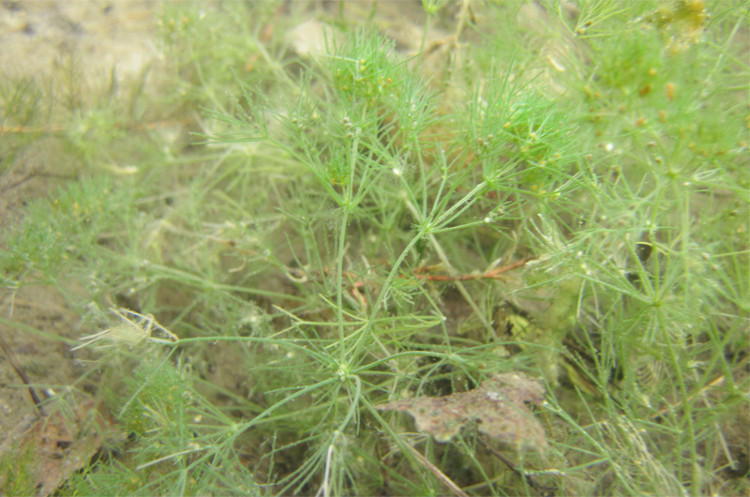New discovery: Prehistoric plants from dinosaurs still live well
The dinosaurs that ruled Earth 66 million years ago have disappeared but the plants they once stepped on may still remain with us.
Scientists first discovered a prehistoric plant called Lychnothamnus barbatus in North America. These are large, green algae that provide food and habitat for fish and other aquatic organisms. This algae thrives on Earth tens of millions of years ago. This means that we can find plants that we think are extinct.
"The existence of this algae does not change the view of the Earth ecosystem but it changes the look of algae plants in North America and inspires us to continue searching for similar species. This also means that we don't really know much about the plant world out there, " said botanist Richard McCourt, Drexel University in Pennsylvania.

The extinct idea plant is now found alive and well - (Photo: University of Wisconsin).
The algae are found in 16 lakes in Wisconsin and Minnesota between 2012 and 2016. Scientists immediately took their differences and they had to analyze its DNA to confirm it was Lychnothamnus barbatus.
Prior to this discovery, the only record available on this plant was the fossil of the Cretaous period dug up in Argentina, dating back to the same time as the fossils of Tyrannosaurus rex dinosaurs.
McCourt said: "Almost immediately we know that we are facing plants once thought to be extinct because it is completely different from any species that has been listed in North America."
Researchers believe that the algae could be brought to North America through ballast water (Ballast Water - used to maintain the stability, balance, structural stability of the vessel), discharging into beach and lake in America. Or it has been here all the time, but we haven't discovered them.
Although the reappearance of Lychnothamnus barbatus in the Western Hemisphere is not large enough to rewrite history, this is also a reminder of the persistent vitality of some plant species that exist over the millennia.
And for researchers, this discovery will inspire and motivate them to find other prehistoric plants that may still be hiding in the water somewhere.
This study was published in Botany magazine.
- Fossil discovery of a new dinosaur
- Giant prehistoric fish species still live up to now
- Giant prehistoric beasts
- 10 misconceptions about dinosaurs
- How does dinosaurs do it?
- 70 million years old dinosaurs
- Arctic dinosaurs are only 20 years old
- Discover new dinosaurs that are thirstier than bloody tyrants
- What if dinosaurs live with humans?
- Finding dinosaurs living in caves
- What happens if humans and dinosaurs coexist?
- The discovery of fossil-covered dinosaur-covered fossils in America
 Why do potatoes have eyes?
Why do potatoes have eyes? 'Tragedy' the world's largest carnivorous life: Death becomes ... public toilet
'Tragedy' the world's largest carnivorous life: Death becomes ... public toilet Tomatoes were once considered 'poisonous' for 200 years
Tomatoes were once considered 'poisonous' for 200 years Detecting microscopic parasites on human face
Detecting microscopic parasites on human face